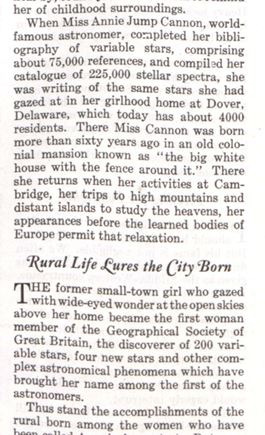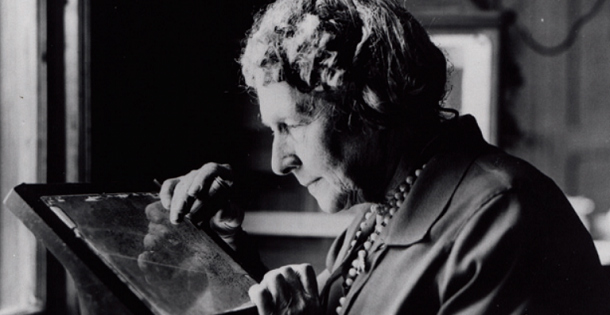“Oh, be a fine girl — kiss me!” was the mnemonic repeated over and over by the pioneering astronomer Annie Jump Cannon as she classified over 350,000 stars. O, B, A, F, G, K, and M represented the hottest to coolest rankings of stars, as observed by Cannon. On this day in 1922, her stellar classification system was accepted by the International Astronomical Union, and it is still widely used in astronomy today.
Cannon began her career in astronomy as a “computer” for Edward Pickering at the Harvard College Observatory in 1896. “Pickering’s Women” were a group of female workers tasked with computing the optical spectra of stars on glass plates photographed by a team of male astronomers by night. Cannon and the rest of her cohorts were paid factory wages for their tedious work of analyzing and cataloguing thousands of stars despite their prestigious qualifications.
As technological innovation brought more powerful photography, Cannon and her team were able to observe more details regarding star temperatures. The glass plate renderings were not in color; they were made using prisms attached to the lens of a refracting telescope. “Pickering’s Women” observed absorption and emission lines on the plates to classify stars in — originally — an A through Q system. When Cannon was brought into the group, she simplified and rearranged the stellar classification system based on a new understanding of spectra from plates that had just been obtained from the sky of the southern hemisphere. Thus, her “Oh, Be A Fine Girl…” system was born.
Cannon’s stellar classification system never bore her name, though. It was adopted by the International Astronomical Union as the Harvard system, and an additional luminosity classification in the ’40s begat the Morgan-Keenan system.
The Country Gentleman mentioned Cannon in 1927, after she had received an honorary doctorate from Oxford and was named the first female officer of the American Astronomical Society: “When Miss Annie Jump Cannon, world-famous astronomer, completed her bibliography of variable stars, comprising about 75,000 references, and compiled her catalogue of 225,000 stellar spectra, she was writing of the same stars she had gazed at in her girlhood home at Dover, Delaware.”
It would be a tall order to expect any astronomer to live up to Cannon’s reputation for classifying three stars per minute, but each year, the Annie Jump Cannon Award in Astronomy is awarded to a North American woman for significant contributions to the field.

Sources
“The Women Who Created Modern Astronomy” Dvorak, John, Sky & Telescope, 1 August, 2013
Statesville Record And Landmark: https://www.newspapers.com/clip/10251323/statesville_record_and_landmark/
Brooklyn Museum: https://www.brooklynmuseum.org/eascfa/dinner_party/heritage_floor/annie_jump_cannon
Become a Saturday Evening Post member and enjoy unlimited access. Subscribe now




Comments
What a fascinating feature on a woman who single handedly accelerated the knowledge and understanding of astronomy, astronomically.